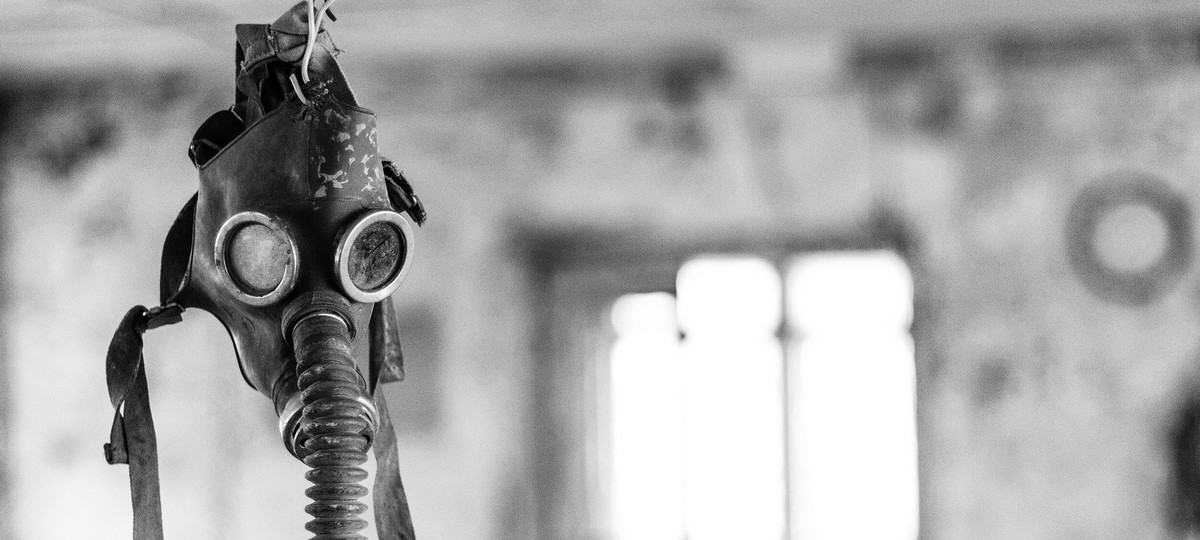
After performing chemical and other analysis, they determined that the radiation wasn't coming from Forsmark. It wasn't even coming from Sweden. It was fallout from Chernobyl, 700 miles away.
The excellent HBO series "Chernobyl" offers an overdue glimpse into the leviathan of lies that was the Soviet system. Some have nitpicked that a composite character was created or that the trial scene at the end wasn't historically accurate, but these exercises in poetic license don't detract from the overall impact, and are, in any case, openly acknowledged, not concealed.
Lies were the Soviet regime's native tongue. From the annual "record" grain harvests to the Katyn Forest massacre and from the Gulag to Lysenkoism to the shootdown of KAL007 to the Holodomor; the system was a black hole from which truth could not escape.
When Sweden demanded an explanation of the radiation, the Soviets denied that anything was amiss. Days later, when other European governments were detecting fallout and when U.S. satellites had photographed Chernobyl's smoldering roof, the official news agency grudgingly acknowledged that an accident had killed "two people" but that "the situation had now been stabilized and (is) under control." A later (post-Soviet) Ukrainian parliamentary report described such reassurances as "disinformation" of "almost Mephistophelean proportions."
The reactor was open and spewing radioactivity. Scores were already dead, more were dying an agonizing death from acute radiation poisoning, and thousands were inhaling and eating and drinking the radioactive isotopes that would cause miscarriages, stillbirths, and thyroid and other cancers. As the Economist summarized, "Chernobyl led to thousands of deaths, including that of the Soviet Union."
While communist party officials were bundling their families out of Ukraine, the people were kept in the dark. Doses of potassium iodide, if administered within 10 days, can protect against thyroid cancer. But there was no program to distribute the medicine. The Ukrainian surgeon general asked that people be warned to at least stay inside, wash their vegetables, avoid drinking milk and take other precautions, but the Central Committee demanded that May Day parades proceed as usual, along with outdoor weddings and bike races. On May 1 in Kiev, as invisible fallout rained down, children in shirtsleeves marched past reviewing stands that usually held Soviet officials. They stood empty.
The Soviets kept their eye on the ball — deceit. Phone lines were cut to Chernobyl to prevent unauthorized truth from escaping, while the official machinery of propaganda revved up. As Robert McConnell reported in National Review, a Soviet television "news" report showed a photo of the damaged reactor and explained: "As you can see for yourself there is no enormous destruction that some Western agencies are writing about, or no great fires, as there are no thousands of dead..." The air and water in Kiev were safe, the Soviet government said. For good measure, the TASS news agency added that the U.S. had experienced "2,300 nuclear accidents and breakdowns in 1979 alone."
While the world reeled from reports of a massive nuclear plume dropping poison whichever way the wind blew; while frantic but secret efforts were underway in Soviet Ukraine to staunch the flow; and while some 200,000 people had to flee their homes (leaving livestock and pets behind as the HBO series dramatizes in sad detail), the official statements from the Kremlin were as noxious as the site itself. Denouncing a "Poisoned Cloud of Anti-Sovietism," Moscow News pointed the finger at a "premeditated and well-orchestrated campaign" to "cover up criminal acts of militarism by the USA and NATO against peace and security."
The catastrophe was a direct result of official lies. The Chernobyl reactor, like others of Soviet design, lacked several key safety features — but operators were kept in ignorance.
It is hard to know just how many people were killed outright or suffered later cancers and other pathologies because of the accident. The Soviet state directed that only the most severe cases of radiation sickness be noted in patients' records. Estimates of deaths vary from several thousand to hundreds of thousands. As tragic as they were, those deaths were a tiny fraction of the millions starved, shot and worked to death by the Soviet Union.
It was among the most soul-crushing of regimes in human history, and lies were at the core of its corruption. The Soviet Union is gone, but deceit lives on. The "Chernobyl" series is a timely reminder and a metaphor: Lying, when it becomes a way of life, is radioactive.
(COMMENT, BELOW)


 Contact The Editor
Contact The Editor
 Articles By This Author
Articles By This Author